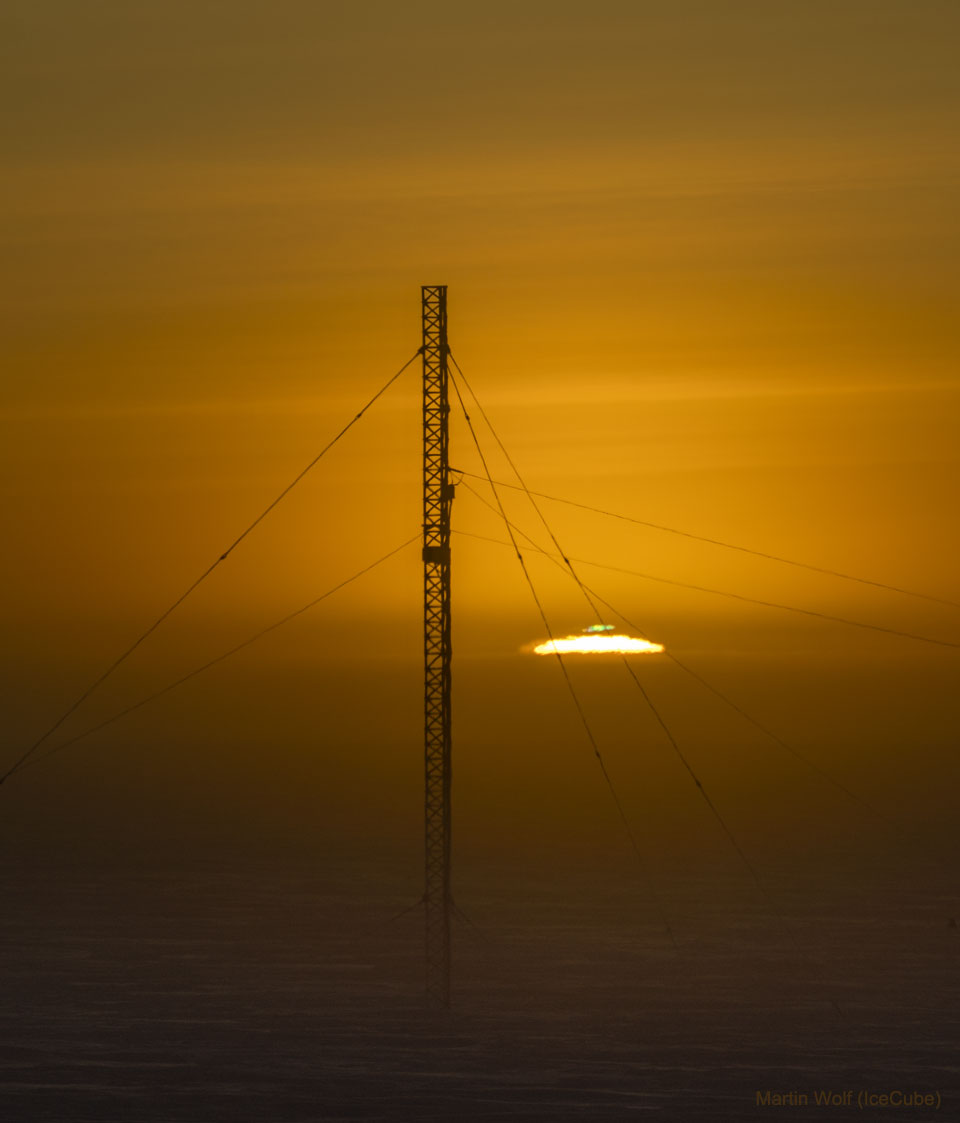南极的日出
(原标题: Sunrise at the South Pole)
2021-10-05
浏览次数: 135
南极的日出是不同的。它通常是受人欢迎的景象,在数月的黑暗之后,开始了数月的阳光。在地球的两极,太阳可能需要数周才能升起,而在任何中纬度地区都需要数小时。极地的日出是由地球绕太阳运行时的倾斜引起的,而不是由地球自转引起的。虽然在极点,没有空气的地球会在春分时首先看到第一个太阳,但地球大气层的透镜效应和太阳圆盘的大小导致太阳的顶部提前大约两周出现。这张照片摄于两周前,太阳从地球南极广阔的冰封景观的地平线上露出来。真正的南极点就在通讯塔左边几米的地方。这张极地日出的照片特别上镜,因为太阳被一道绿色的闪光覆盖着。
查看原文解释
Sunrise at the South Pole is different. Usually a welcome sight, it follows months of darkness -- and begins months of sunshine. At Earth's poles, it can take weeks for the Sun to rise, in contrast with hours at any mid-latitude location. Sunrise at a pole is caused by the tilt of the Earth as it orbits the Sun, not by the rotation of the Earth. Although at a pole, an airless Earth would first see first Sun at an equinox, the lensing effect of the Earth's atmosphere and the size of the solar disk causes the top of the Sun to appear about two-weeks early. Pictured two weeks ago, the Sun peeks above the horizon of a vast frozen landscape at Earth's South Pole. The true South Pole is just a few meters to the left of the communications tower. This polar sunrise capture was particularly photogenic as the Sun appeared capped by a green flash.
© Martin Wolf (U. Wisconsin), IceCube Neutrino Obs., NSF; ht: Alice Allen
